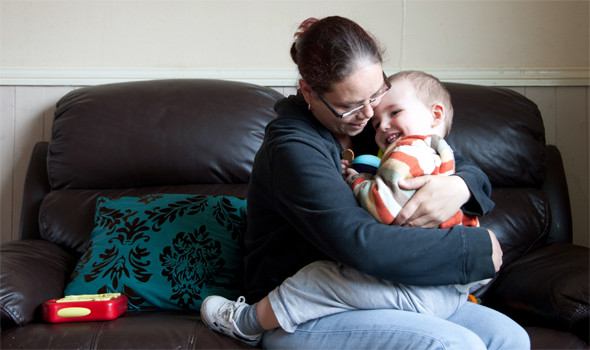UK Cost of Living Crisis and Stagnant Wages Places 25% of Children into Poverty

New research shows that the heightened cost of living and weak wage growth has forced around 25% of British children into poverty as adults find it increasingly hard to make ends meet.
According to the End Child Poverty (ECP) campaign, a quarter of all children in the UK live in poverty; once accommodation is paid for, around 50% of youngsters are living below the breadline in some of the country's most deprived areas.
"These figures reveal just how widely and deeply child poverty reaches into our communities, even those areas generally regarded as well off," said David Holmes, chairman of End Child Poverty.
"Far too many children whose parents are struggling to make a living are suffering as a result and missing out on the essentials of a decent childhood that all young people should be entitled to."
The ECP said austerity measures, such as welfare spending cuts, alongside weak wage growth means more and more children are falling into poverty and currently it is unlikely the government would meet its aim of tackling child poverty by 2020.
The government originally placed a target to reduce the number children living in poverty to 1.2 million, from current records of 2.3 million children.
ECP said child poverty is increasingly a problem in families where at least one parent works.
Government Denies the Figures
The research is based on HMRC figures from 2011, combined with up to the latest official Labour force data for the final quarter of 2013, but the government has denied the accuracy of the report.
"The figures do not provide an accurate picture of child poverty. We're doing more than ever to help children, the attainment gap for deprived pupils has fallen and we've just seen the largest fall in unemployment since 1988," said a government spokesman.
"We remain committed to our goal of ending child poverty by 2020. We've already made great strides under this government with 300,000 fewer children in relative poverty and 290,000 fewer children growing up in workless families."
The ECP classes a child in poverty if its family live in receipt of out of work benefits or tax credits where household income is below 60% of median income.
Britain's government hails the UK unemployment rate of 6.2% in the three months to July – its lowest level since 2008 - as a key indicator that the economy is recovering and more people are finding work.
However, pay including bonuses for employees in the UK was 0.6% higher than a year earlier as the average wage packet was £478 per week before tax and other deductions from pay.
This is meagre considering Consumer Price Index inflation grew at a rate of 1.6% in the year to July. So the tiny bump in pay doesn't come close to the rise inflation.
Moreover, rent has shot up across Britain due to the housing shortage and the rocketing property prices.
It now costs, on average, £274,000 (€345,052, $437,283) to buy a home in the UK while those buying a home in London is expected to part with, on average, over half a million pounds.
ECP said nine of the 16 most deprived neighbourhoods, which have child poverty rates over 50%, are in the east London borough of Tower Hamlets.
"Low wages, rising living costs and welfare reform has pushed many of the families we work with to the brink of financial crisis, forcing them to make desperate choices between heating the house or buying food," said Barnardo's chief executive, Javed Khan.
"Politicians need to wake up to the ongoing child poverty crisis in parts of the UK, taking action with joined-up proposals that tackle hardship at a local and national level. This includes preventing families reaching crisis point by restoring the link between benefits and inflation."
© Copyright IBTimes 2025. All rights reserved.





















